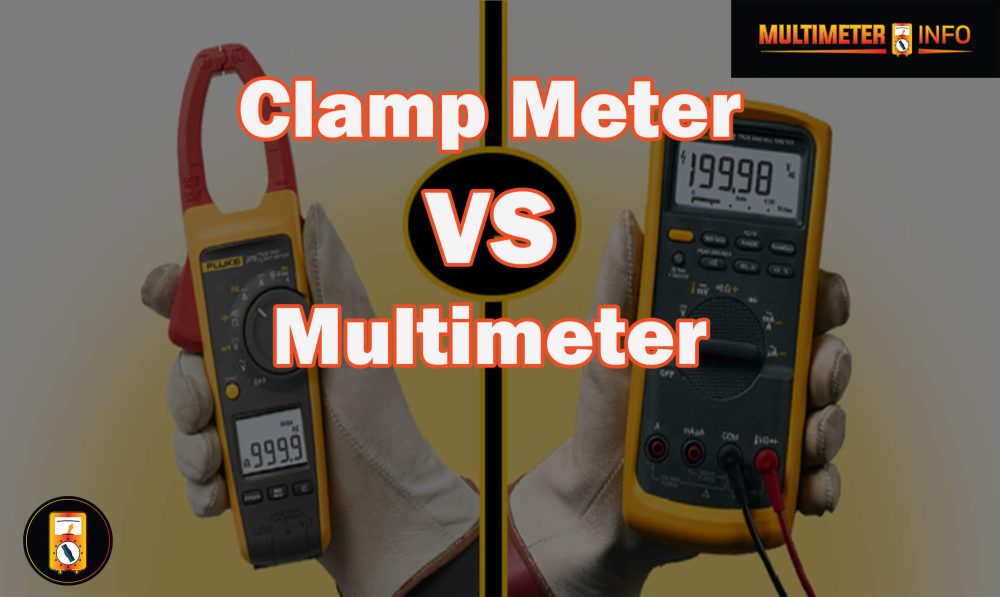Do you want more control over some of the electrical components in your home or business? A clamp meter could be the ideal tool for you. Clamp meters are a type of digital multimeter that can measure current without disconnecting any wiring, making them an extremely useful tool when working with complex electronics. This post will explain what a clamp meter is and how it can help you with your electrical work. We’ll also go over its applications and how to use one properly for the best results! So, if you want to learn more about this indispensable device, keep reading!
What is a Clamp Meter?
A clamp meter is a type of electrical testing device commonly used to measure alternating current (AC) or direct current (DC) in an electrical system. It has a pair of jaws that can be clamped around a wire or other conductor, allowing it to measure the current flowing through the conductor without having to make contact with it.
Clamp meters are popular among electricians and engineers alike for their convenience, portability, and accuracy. It is often used when troubleshooting complex circuits or identifying sources of electrical interference. It can also be used to measure voltage, resistance, frequency, and other parameters.
Clamp meters are designed for safety and come with several features that make them suitable for use in hazardous environments. For example, they have insulated jaws that protect the user from shock or electrocution while measuring current. They also often have special features such as low-pass filters that help reduce electrical noise when making measurements.
Overall, clamp meters offer an efficient way of measuring current without having to make contact with conductors or directly expose oneself to live electric circuits. This makes them invaluable tools for anyone working with electricity.
Functionalities of the Clamp Meter:
- The Transformer Trigger is used to open the jaws of the clamp meter. This allows it to access any current signal, making measurements easier and faster.
- The Select button enables you to choose between different measurement modes such as Current, Voltage, and Resistance. It gives you access to the parameters required for testing an electrical system accurately and efficiently.
- A Relative Button is provided that can be used for nullifying the current reading which establishes a zero-reference value for all subsequent measurements.
- There is a Common Reference Input (GROUND) terminal or COM terminal, that provides a safe environment by grounding the readings taken from the circuit being tested.
- The Transformer Jaw is used to pick up the current signals from the wires in a circuit.
- A Function Selection switch allows you to choose which parameter needs to be measured, such as AC/DC Voltage, Resistance, and Continuity.
- The Liquid Crystal Display provides an accurate reading of the measurement results with clear symbols indicating what function is being tested. This makes troubleshooting any faults or errors quick and easy.
- A Data Hold function is provided which freezes the current reading on the LCD, allowing you to record it accurately.
- A VΩ In terminal is provided for connecting an external voltage source and thereby taking more accurate readings. This can be very useful when dealing with high-voltage circuits.
The Clamp Meter is a powerful and reliable tool that offers a range of features designed to allow easy and accurate diagnostics of electrical systems. With its Transformer Trigger, Select Button, Relative Button, COM Terminal, Transformer Jaw, Function Selection switch, Data Hold button, and VΩ In Terminal, this device ensures efficient testing and maintenance of electrical systems for both professional and DIY users.
How to use a clamp meter to measure voltage?
Testing voltage is an important part of many electrical installations and repairs. A clamp meter can be used to measure voltage quickly and accurately. The basic steps for using a clamp meter to measure voltage are:
- Select an appropriate clamp size for your application. Most clamp meters have adjustable jaws that allow you to select the size of the opening so you can fit it around the wire or cable to be tested.
- Connect the test leads securely to the wiring terminals. Make sure that both alligator clips on either end of the meter’s test leads are both securely connected and not loose or disconnected in any way before proceeding with testing.
- Place the jaws of the clamp meter around the wire or cable whose voltage is being measured and close them securely, making sure that its contact points are making contact with the wiring to be tested.
- Select the voltage testing mode on the meter, typically indicated by a symbol or set of letters like “ACV” or “DCV”. AC stands for Alternating Current and DC stands for Direct Current.
- Turn on the clamp meter and take a reading of the voltage being measured. The unit of measurement will depend on what type of clamp meter you are using, but most digital clamp meters measure either in Volts (V) or milliVolts (mV).
- Write down or record your results somewhere safe for later reference, if needed. In some cases, it may also be necessary to take multiple readings over time to get an accurate average of the voltage being measured.
- Once you are done taking measurements, turn off the clamp meter and disconnect the test leads from the wiring terminals before moving on to another task or putting away your tools.
By following these steps, you can easily measure voltage using a clamp meter. After familiarizing yourself with how to use one, it should become second nature and you’ll be able to take accurate voltage readings in no time! Keep in mind that if you’re ever unsure about what kind of readings you’re getting or have any doubts, always consult an electrician for help instead of trying to figure it out on your own. Safety is key when dealing with electricity and proper training will ensure that everything goes smoothly.
How to Use a Clamp Meter to Measure Amps?
Testing electrical components requires specialized tools, such as clamp meters. A clamp meter is a device used to measure AC current in an electrical circuit without having to break the circuit by connecting test leads across it. It has two jaws that open and close around a conductor, allowing you to take readings from the circuit safely.
- Set the clamp meter to measure amperes (amps) by turning the selector dial to the ‘A’ setting. Depending on your model, this may be indicated with an AC symbol or by several arrows pointing in opposite directions.
- Place the jaws of the clamp meter around one of the conductors in the circuit that you wish to test. Ensure that only one conductor is enclosed within the jaws and that no other components such as wires or cables are interfering with them.
- Take readings from both ends of the conductor using your clamp meter, recording each reading separately for comparison purposes later on.
- Write down any additional information about the circuit, such as voltage and resistance, that can be used to help interpret the results.
- Compare the readings taken from each end of the conductor with one another. If they are significantly different, this could indicate a problem with the circuit or component being tested, such as loose connections or faulty wiring.
- Repeat the process for any additional conductors in the circuit that you wish to test and compare their readings too.
Once you have taken all your measurements, review all of your data and use it to identify any potential problems with the system before performing further tests or making repairs. Using a clamp meter can save time when diagnosing electrical issues and helps ensure accuracy when testing components—this is why it is an essential tool for electricians and technicians.
When using a clamp meter, always remember to take all necessary safety precautions and keep yourself and your equipment safe. Also, be sure to consult the manufacturer’s instructions and familiarize yourself with the tool before attempting to use it. With proper handling and care, your clamp meter should provide accurate readings for many years of use.
Frequently Asked Questions:
Always make sure that all power sources are turned off before use and that you have selected the correct settings for your application. It is also important to wear insulated rubber gloves when handling electrical components as these provide extra protection against electric shock. Additionally, ensure you are not near any other people while working with live electricity to avoid injury or harm to others.
The best way to check accuracy is by comparing your results against known measurements taken using a standard multimeter or voltmeter. If there is a significant difference, then you will need to calibrate your device or have it checked by a qualified technician. Additionally, always check for any loose connections, broken wires, or damaged components before attempting to take measurements.
Your clamp meter should be stored in a clean and dry area away from direct sunlight and extreme temperatures. It is also important to ensure that the device has been switched off and disconnected from any power sources before storage. Additionally, use the correct case or protective covering provided by the manufacturer when not in use as this will help keep dust and debris out of sensitive components. Finally, always follow the manufacturer’s instructions carefully when using your clamp meter as improper use can lead to inaccurate readings or even personal injury.
The features offered by clamp meters depend on the model, but most are capable of measuring AC and DC current, voltage, resistance, and even temperature. Some models may also have additional features such as data logging capabilities, multilingual support, and low-battery indicators. It is important to check the manufacturer’s specifications carefully when purchasing a new device to ensure that it meets your requirements.
Conclusion:
Finally, a clamp meter is a versatile and powerful tool for measuring currents accurately in a wide range of applications. If properly cared for and maintained, it can provide reliable measurements for many years to come. Understanding how to use a clamp meter correctly is critical for getting accurate measurements, so thoroughly read the user manual and practice using the device before taking any measurements.





